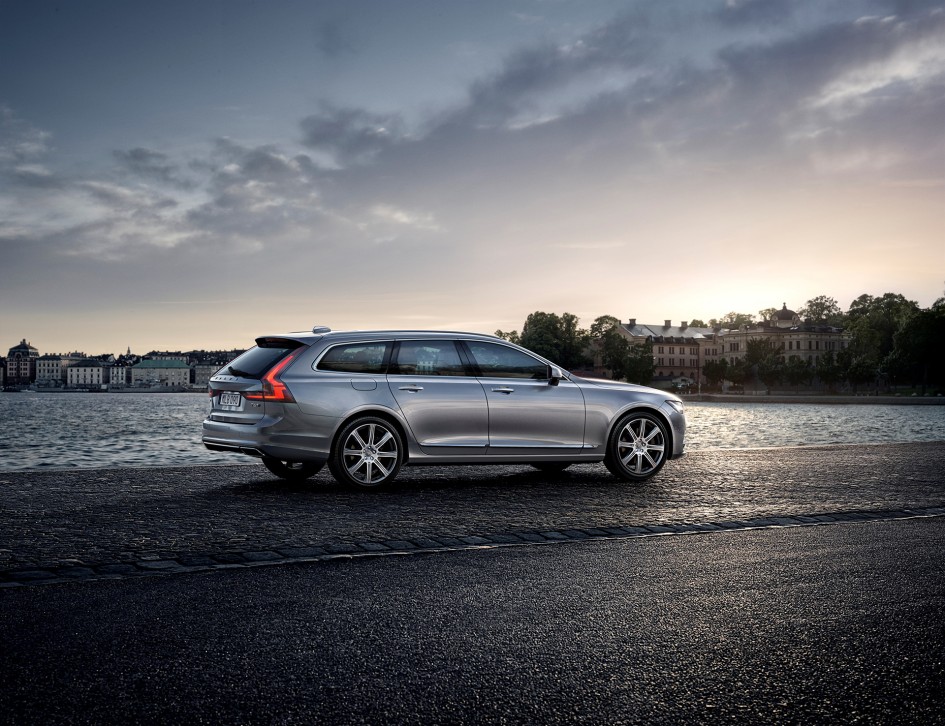Partager la publication "Volvo V90 : véhicule break continue 60 years of estate heritage au Diesel, Petrol, Hybrid Electric"
Le Volvo V90 tant attendu a été présenté le 18 février 2016 à Stockholm, en Suède. Élégant et polyvalent, le V90 est le dernier modèle de la série 90 imaginé par Volvo. Il vient compléter le trio haut de gamme formé avec le SUV XC90 et la berline S90 récemment présentée. Présentons ce véhicule phrare de l’héritage de Volvo Cars : véhicule type « break » ou ‘estate’. Découvrons les motorisations Diesel, Essence et Hybrid Electric, en détail et en images.
The new Volvo V90 : video live reveal
The new #VolvoV90 is here.
Design du Volvo V90
V90 est déclinaison beak de la berline S90 présentée avant le salon de Detroit 2016. Mais en fait, Volvo reprend les lignes du concept Estate de 2014
Volvo Concept Estate
Celebrating creativity and Swedish design. The third chapter in our journey.
Identité visuelle Volvo
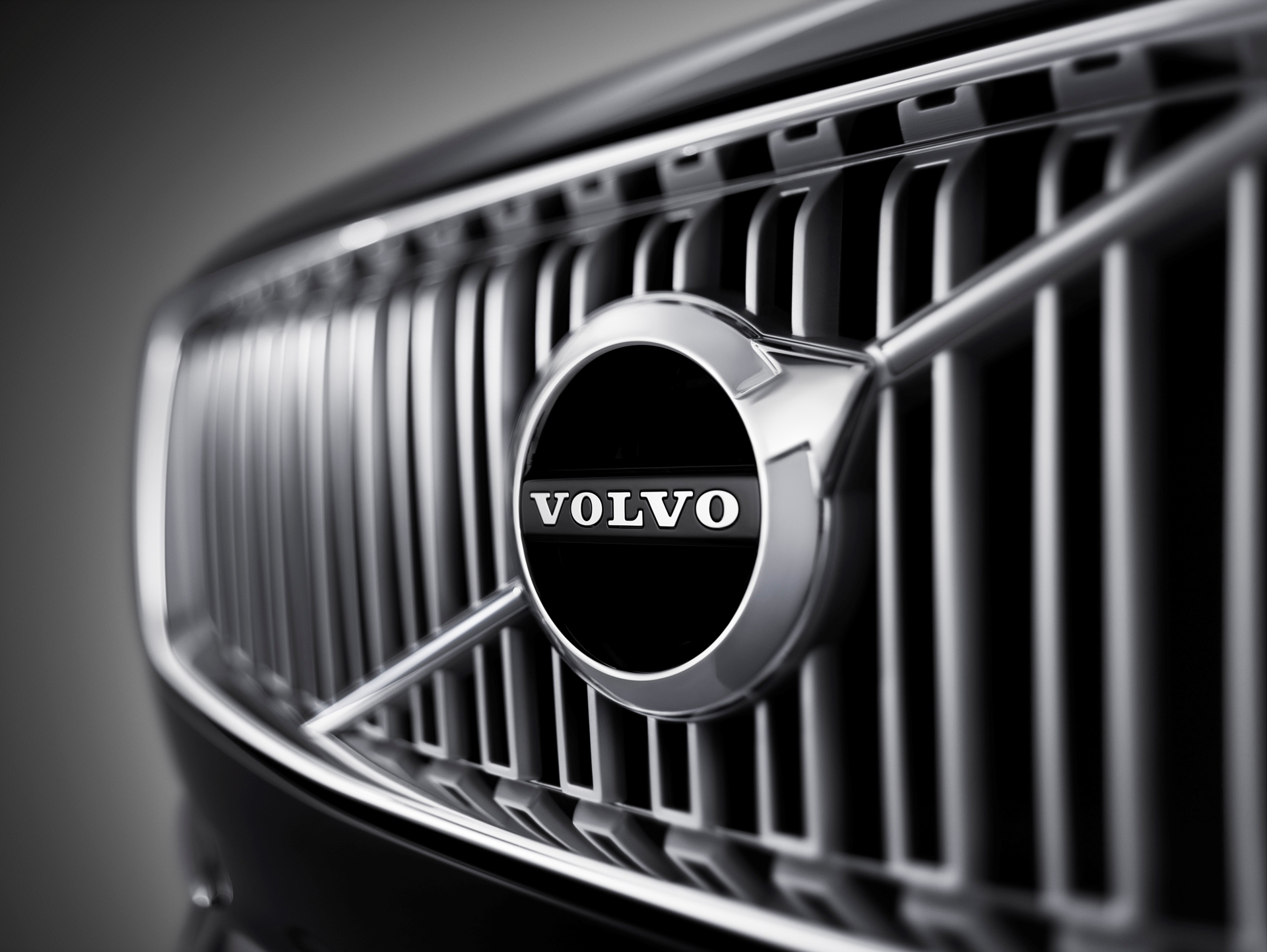
Volvo XC90 – front logo / logo avant
On retrouve la signature lumineuse des Volvo Cars avec les feux avant et arrière reconnaissable, et tout le style préparé pour le XC90.
A voir en complément : Volvo XC90 : le SUV, the best design, au moteur 2L essence hybrid de 400 ch.
Le Volvo XC90 est le premier véhicule à arborer le logo revisité, emblème du fer, bien connu avec la flèche emblématique de l’entreprise alignée de façon élégante avec la barre diagonale à travers la grille. Avec les phares avant en forme de T ou « Marteau de Thor », le logo symbole du fer présente un visage innovant, distinctif et confiant pour la génération de véhicules Volvo à venir.
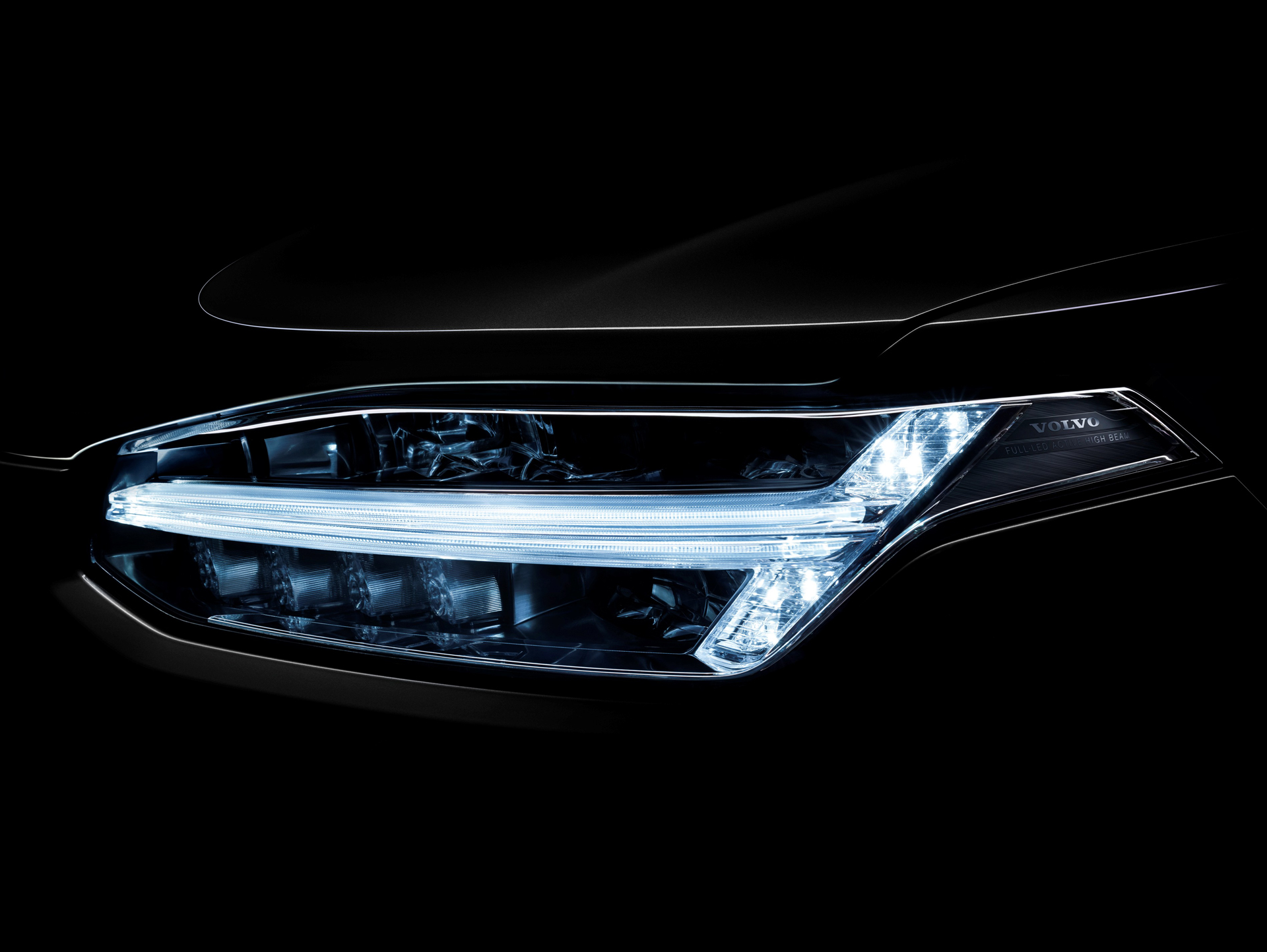
Volvo XC90 – front LED / optique avant
Les nouveaux feux arrière sont autant d’autres signatures de design qui se refléteront à travers la série.
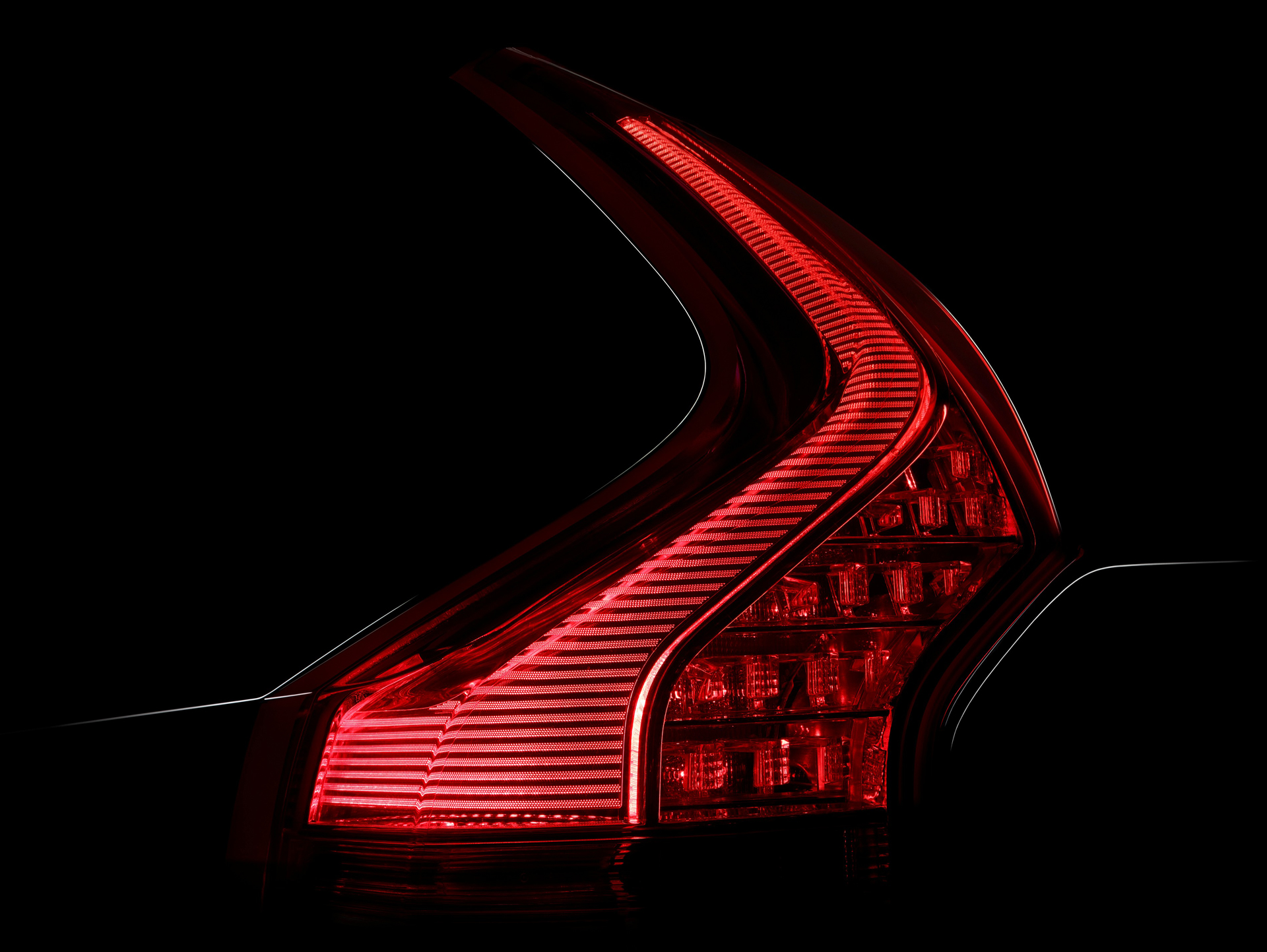
Volvo XC90 – rear LED / optique arrière
Design extérieur du Volvo V90
véhicule type break / estate vehicle
Capitalisant sur l’héritage incontestable de Volvo Cars en matière de breaks, dont les fondements remontent à la naissance de la Volvo Duett il y a 60 ans, le nouveau V90 fait franchir au break premium un nouveau cap en termes d’esthétique, de matériaux et de finition tout en restant fidèle au profil éminemment pratique qui fait la popularité de ce segment.

Volvo Cars Heritage
Un break, ou une familiale au Canada français, est un type de carrosserie automobile similaire à une berline, mais avec un toit qui se prolonge jusqu’à l’aplomb de l’arrière du véhicule.
En anglais, il existe plusieurs termes selon les pays : « estate » (au Royaume-Uni), « station wagon » (aux États-Unis, au Canada anglophone et en Australie) le terme « wagon » tout court est aussi parfois utilisé en Australie.
Le terme français européen actuel vient, comme le nom des différents types de carrosseries automobiles, du nom d’un véhicule hippomobile : à l’origine, le break est une petite voiture destinée au dressage des chevaux (« to break » signifie dans le langage équestre « rompre », « dresser »).
Par la suite le break fut modifié pour le transport d’objets et de personnes en allongeant la caisse qui fut munie de deux banquettes en vis-à-vis. Puis, à partir de la généralisation des caisses carrées, vers les années 1920, ce que l’on appelle actuellement break fut appelé en français « limousine commerciale » ou « limousine familiale » selon le nombre de banquettes arrière.
Aujourd’hui le terme « break » est principalement employé par les franco-européens et parfois par les britanniques à la place d’« estate ».
« Nous occupons une position stratégique sur le segment des breaks. Dans l’esprit de bon nombre de personnes, nous sommes même LA marque de breaks. Et si Volvo est, en réalité, bien plus qu’un expert en breaks, nous mettons fièrement en avant la richesse de cet héritage avec le V90. » - Håkan Samuelsson, Président et CEO de Volvo Cars
Le nouveau V90 est le troisième modèle révélé dans la série 90, qui occupe le haut de la gamme Volvo. Comme le Volvo XC90 et la Volvo S90, il repose sur la plateforme SPA (Scalable Product Architecture) entièrement modulaire du constructeur, qui a ouvert la voie à un éventail de possibles en matière de design, de construction et d’équipement des véhicules.

Volvo Cars V90 – 2016 – steel cage

Volvo Cars V90 – 2016 – front / avant
Long de 4,94 m et large de 1,90 m, le nouveau V90 dépasse son prédécesseur, le V70 de quelques 12 cm en longueur et de 4 cm en largeur.

Volvo Cars V90 – 2016 – side-face / profil

Volvo Cars V90 – 2016 – top / toit

Volvo Cars V90 – 2016 – rear / arrière
Volvo Cars presents the new V90. The pinnacle of the modern estate.
Introducing the new #VolvoV90.
Music: Made Of – Viola Martinsonn
Design intérieur du Volvo V90

Volvo Cars V90 – 2016 – interior / intérieur
L’ambiance est similaire à celui de la berline S90. Ici, la banquette arrière est modulable.

Volvo Cars V90 – 2016 – seats / sièges
« Ce break premium moderne est un savant mélange d’expérience luxueuse et d’ADN fonctionnel. L’ambiance sophistiquée des nouveaux intérieurs Volvo se conjugue avec un vaste espace de chargement et offre les fonctionnalités nécessaires, que ce soit par sa connectivité, son volume de chargement ou ses solutions de rangement » - Thomas Ingenlath, Vice-président senior chargé du Design de Volvo Cars
Moteur du Volvo V90
« Le V90 a vraiment tout pour séduire. Notre technologie PowerPulse est conçue pour stimuler instantanément la performance de la motorisation diesel D5, tandis que la version hybride rechargeable T8 Twin Engine essence délivre près de 410 ch cumulés et offre une autonomie d’environ 50 km en mode tout électrique » - Peter Mertens, Vice-président senior chargé de la Recherche et du Développement de Volvo Cars
Sous la capot, le Volvo V90 propose les mêmes motorisations essence et diesel que la berline, via le bloc L4 2.0L suralimenté.
Le moteur Drive-E est suralimenté par un compresseur et un turbo. On retrouve une boite de vitesse : 8-speed automatic, ou 6-speed manual.
“Volvo Cars’ Drive-E powertrain technology is focused squarely on delivering responsive power, clean efficiency and an exceptional driving experience. We achieve this with our compactly-designed engines, advanced boosting solutions and a firm commitment to electrification across our portfolio.”
- Dr Peter Mertens, Senior Vice President Research & Development at Volvo Car Group.

Volvo Cars 2016 – engine-Petrol – engine Diesel
D4 engine
In-line 4-cyl. twin turbo diesel
Series-sequential two-stage turbo
i-Art common rail direct injection
Transverse, front wheel drive
Power: 190hp
Torque: 400Nm

Volvo Cars 2016 – Diesel engine turbo
D5 AWD
In-line 4-cyl. twin turbo diesel
Series-sequential two-stage turbo with one VNT
i-Art common rail direct injection
Transverse, all wheel drive
Power: 235hp
Torque: 480Nm
T5 engine
Gasoline direct injection
In-line 4-cyl. turbo
One turbo with waste gate
Transverse, front wheel drive
Power: 254hp
Torque: 350Nm

Volvo Cars 2016 – Petrol engine supercharger turbo
T6 AWD
Gasoline direct injection
In-line 4-cyl. supercharged and turbocharged
One supercharger + one turbo with waste gate
Transverse, all wheel drive
Power: 320hp
Torque: 400Nm
T8 AWD
In-line 4-cyl. supercharged and turbocharged
Transverse, front wheel drive, rear electric motor
Power: 320hp
Torque: 400Nm
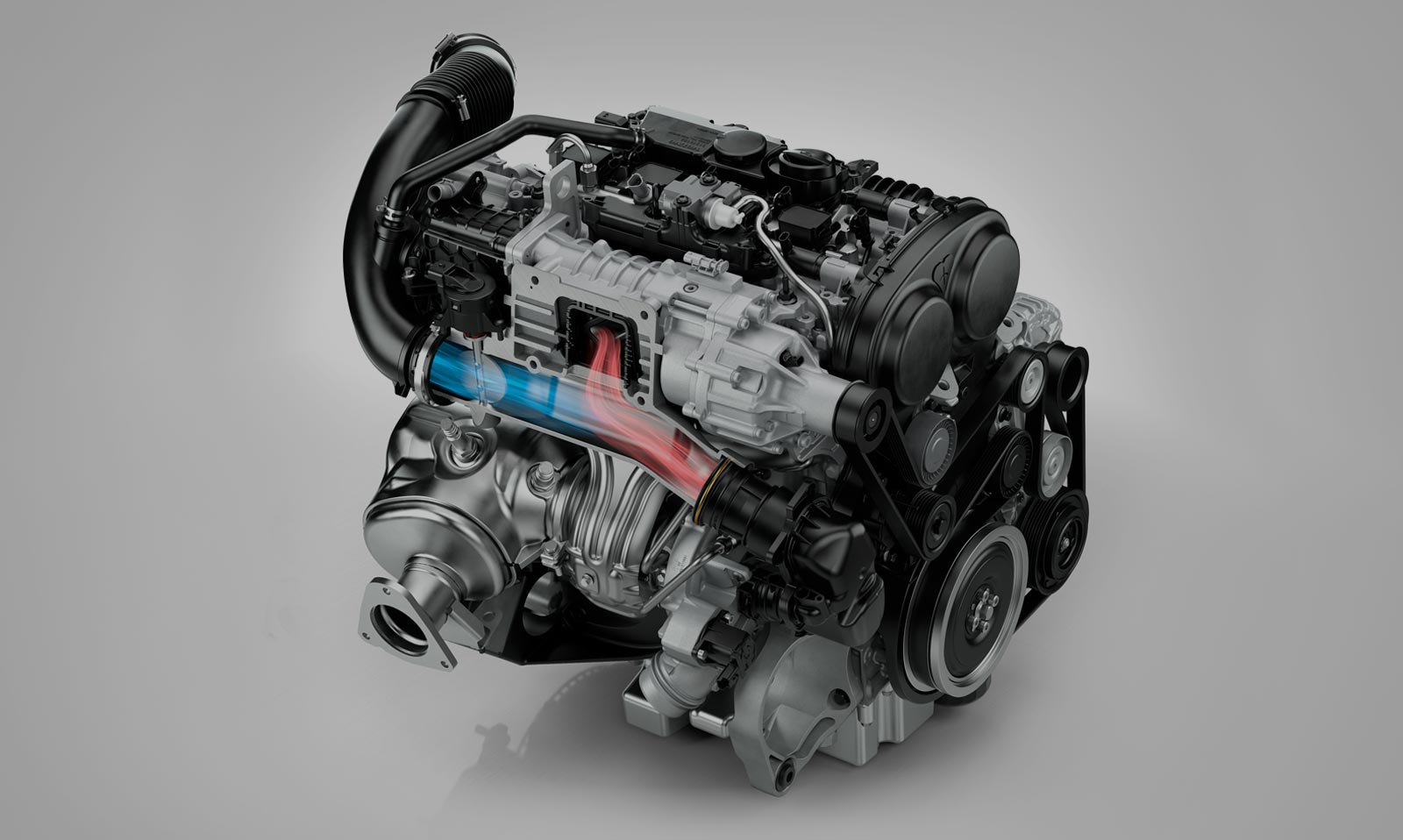
Volvo XC90 – engine T8 / moteur T8
La motorisation hybride rechargeable haut de gamme « Twin Engine » arborera le badge T8, et combinera les qualités d’une voiture électrique, d’une voiture hybride et d’une voiture hautes performances. The all-new Volvo XC90 Twin Engine features a crankshaft driven Integrated Starter Generator (ISG) between the high-performance petrol engine and the 8-speed automatic gearbox.
Hybrid Plug-in (L4 2.0 L Turbo + moteur électrique Power Pulse)
ALL-WHEEL DRIVE
The all-wheel drive variants of the Volvo S90 and V90 have a very efficient type of four-wheel drive system. A compact and lightweight coupling (BorgWarner Gen. 5) distributes the engine’s power between the front and rear wheels. Under normal, dry conditions practically all of the power is distributed to the front
wheels. The system constantly calculates the need for torque to the rear wheels and can instantly redistribute up to 50 per cent of the engine’s torque to the rear wheels. When at a standstill, full all-wheel drive is always engaged to prepare for maximum traction during acceleration.
Powertrain

Volvo Cars V90 – 2016 – Drive E – T8 AWD – rear electric
Generator Battery

Volvo Cars V90 – 2016 – Drive E – Twin Engine Tech – Starter Generator – Battery
Technologie Power Pulse
Développé pour la S90, le moteur D5 dispose d’une innovation inédite dénommée Power Pulse. Il s’agit d’une bonbonne d’air comprimée, libérée lors des accélérations franches pour entraîner le turbo compresseur et diminuer son temps de réponse. On retrouve cette technologie sous le capot du V90.
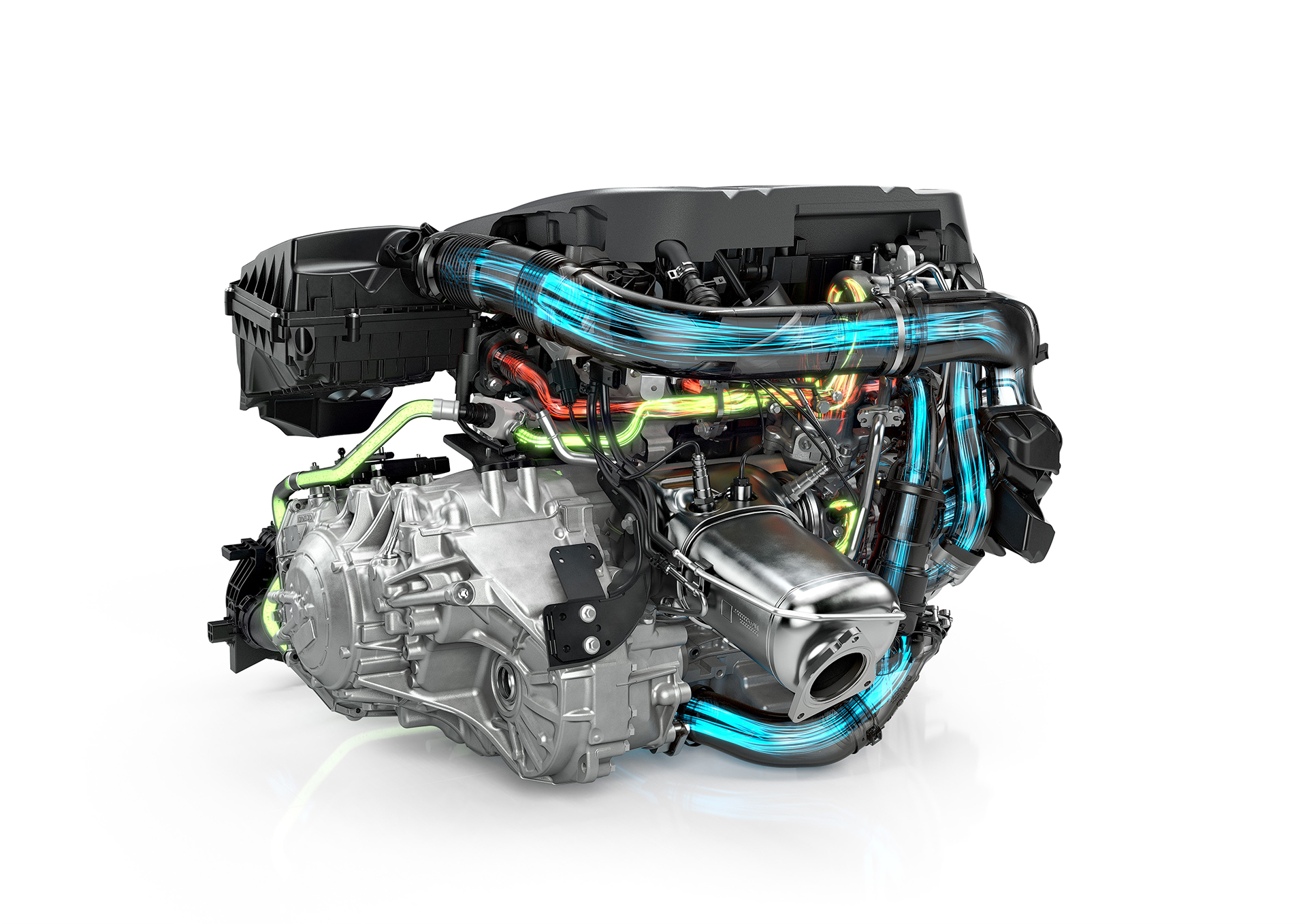
Volvo S90 – 2016 – PowerPulse
With PowerPulse, Volvo Cars has developed an innovative way of delivering instant turbo response in diesel engines providing a distinct performance feel that many car makers struggle to achieve in their diesel variants. PowerPulse works by drawing air from the air filter via a compressor to a pressurised two-litre air tank. When the driver wishes to accelerate quickly during launch and during low-speed driving, the air is fed by a valve into the exhaust manifold to feed the turbo. This has the effect of delivering a quick and responsive pulse of power. The air in the tank is topped-up automatically, making sure that PowerPulse is always ready to deliver a new boost. Volvo Cars is the only car maker currently usingsuch technology in production cars.
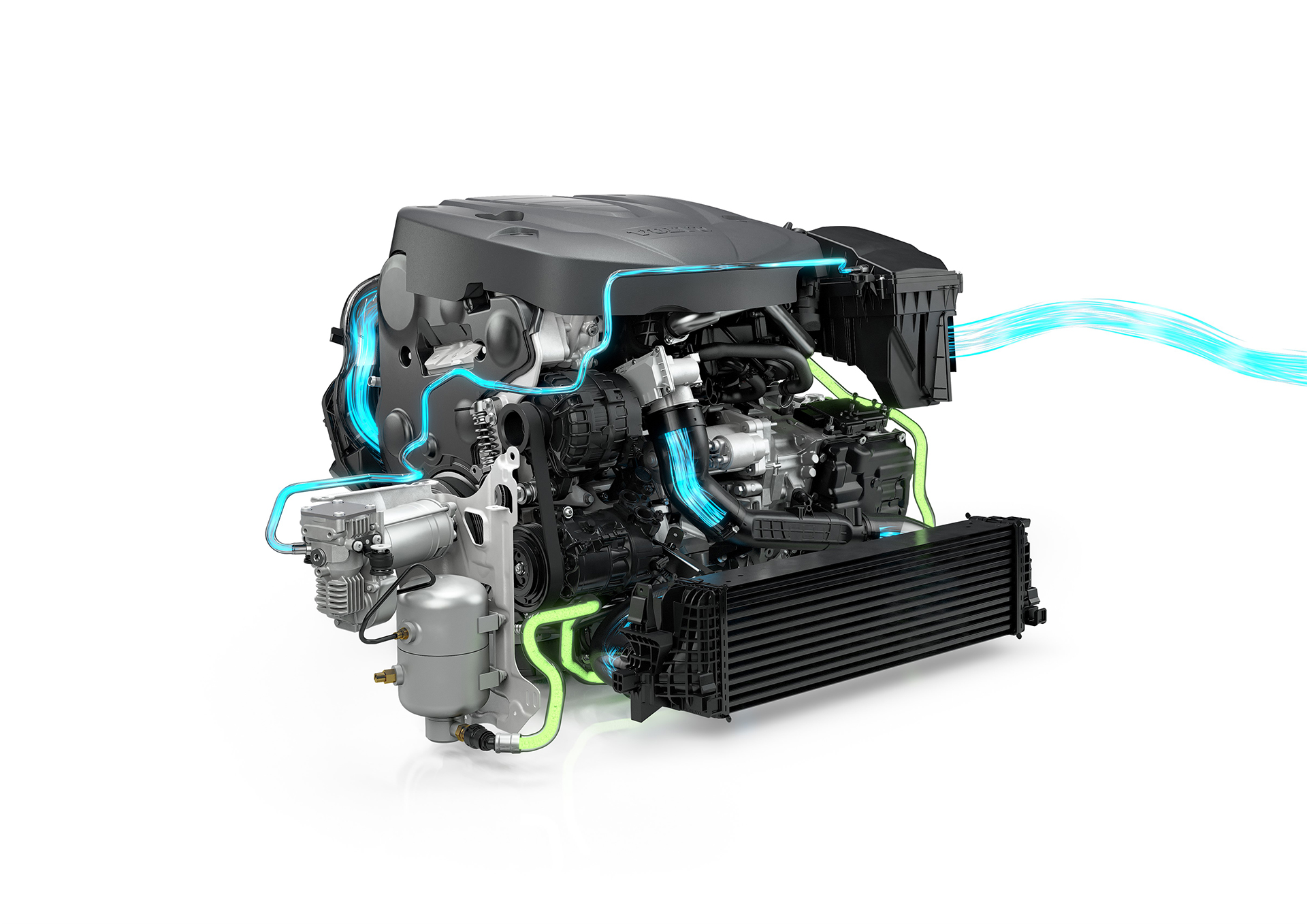
Volvo S90 – 2016 – PowerPulse (air)
Twin Engine Technology Plug-in hybrids
“Volvo Cars has made a clear commitment to electrification across our entire product range. Our Twin Engine technology is a confident first step forward. This technology delivers a no compromise balance of clean, efficient performance and exceptional driving pleasure. It is all about using the latest available technology to address unmet consumer needs.” - Dr Peter Mertens, Senior Vice President Research & Development at Volvo Car Group
Volvo’s Twin Engine technology is essentially a combination of an internal combustion engine and electric power. Electric energy from the grid can be
stored in a High Voltage Battery. The technology is more commonly known as Plug-in Hybrid Technology (PHEV).
Clé de contact… sans clé… sans contact
Introducing Volvo Keyless Cars
From 2017, Volvo plans to become the world’s first carmaker to offer cars without keys. Discover more human-centric innovations made by Sweden
Volvo Cars prévoit de proposer des véhicules sans clé à l’horizon 2017. Une grande première mondiale et une révolution en perspective.
Volvo va proposer une application pour smartphone qui remplacera leur clé physique par une clé virtuelle. Cette technologie de clé numérique innovante, compatible Bluetooth, sera synonyme de grande souplesse et offrira de nouvelles perspectives en matière d’utilisation et de partage de véhicules.
Avec la nouvelle application Volvo, la clé numérique stockée sur le smartphone aura exactement les mêmes fonctions que celle de la clé physique telle qu’on la connaît aujourd’hui, comme le verrouillage et déverrouillage des portes et du coffre ou le démarrage du moteur.
De plus, la nouvelle technologie permettra de disposer de plusieurs clés numériques dans l’application pour accéder à différentes Volvo dans divers endroits, en fonction de l’évolution des besoins en mobilité.
L’application devrait également permettre aux utilisateurs de réserver et payer leur voiture de location aux quatre coins du monde puis de recevoir leur clé numérique directement et instantanément sur leur smartphone. Arrivé à destination, il suffira de localiser le véhicule grâce au GPS puis de le déverrouiller pour prendre la route, pour éviter de longues files d’attente au guichet des agences de location des aéroports et des gares.
La clé numérique de Volvo Cars fera du partage de véhicules une opération simple et pratique. Les propriétaires de Volvo pourront envoyer leur clé numérique à d’autres personnes – famille, amis ou collègues – via leur smartphone pour leur permettre d’utiliser un véhicule.
« Nous n’innovons pas pour le plaisir d’innover. Une nouvelle technologie doit faciliter la vie et faire gagner du temps. Les besoins en mobilité évoluent et nos clients veulent pouvoir accéder à leur véhicule le plus simplement possible. Notre technologie novatrice de clé numérique a le pouvoir de révolutionner la manière d’accéder à une Volvo et de la partager. Plutôt que de rester garés à longueur de journée dans des parkings, les véhicules pourraient ainsi être utilisés plus souvent et plus efficacement par toute personne ayant l’autorisation de leur propriétaire. » - Henrik Green, Vice-Président en charge de la stratégie produit et de la gestion de gamme de véhicules chez Volvo Cars
Volvo testera cette technologie au printemps 2016 via sa société de partage de véhicules Sunfleet, basée à l’aéroport de Göteborg, en Suède. Un nombre limité de véhicules disponibles à la vente sera équipé de cette nouvelle technologie de clé numérique dès 2017.
« Cette technologie de partage de clé augure de grands changements. Nous sommes impatients de découvrir d’autres applications possibles et sommes ouverts à toutes les suggestions » - Martin Rosenqvist, Directeur nouveaux modèles en charge des produits spéciaux chez Volvo Cars
Volvo est un précurseur en matière de solutions de clés numériques. En 2015, le constructeur a lancé la première offre commerciale de livraison de courses achetées en ligne directement dans le coffre de sa voiture, un service rendu possible grâce à une clé numérique à usage unique transmise à la société chargée de la livraison. Désormais, ce système de clé numérique sera proposé aux particuliers.
Volvo continuera d’offrir une clé physique aux clients qui le souhaitent.
Volvo Cars road to Mobile World Congress 2016
La technologie innovante de clé numérique a été présenté par Volvo sur le stand Ericsson du Mobile World Congress (MWC), le plus grand salon annuel de l’industrie de la téléphonie mobile, organisé à Barcelone du 22 au 25 février 2016.
Cette Volvo s’ouvre et démarre avec votre smartphone – MWC 2016
via 01netTV
Volvo road to Geneva 2016
Le Volvo V90 sera présenté aux médias dès le 1er mars 2016 et au public du 3 au 13 mars, au Salon de Genève .
Engish summary
The new Volvo V90 will benefit from over 60 years of estate heritage
Few car companies can claim the same pedigree as Volvo Cars when it comes to the design and manufacture of family estates. That is why the news that Volvo will reveal its new V90 estate on February 18 in Stockholm is so widely-anticipated and significant.
The V90 is a car that benefits from over 60 years of estate building heritage that started with the Volvo Duett which was launched in 1953 – the first car to meet the combined needs of drivers’ active leisure time and practical professional lives.
Since that day, Volvo has sold more than 6 million estates worldwide, representing around a third of the total number of Volvos sold since the company’s foundation in 1927, giving it a well-deserved reputation for designing and building the ultimate family estates.
“We have provenance in the estate segment. In many people’s minds we are known as the definitive estate brand. While the Volvo brand stands for much more than just estates, we will proudly carry forward this rich heritage with the V90.” - Håkan Samuelsson, chief executive at Volvo Cars
The launch of the new Volvo V90 on February 18 is the latest chapter in this proud history. Based on the same Scalable Product Architecture (SPA) as its XC90 and S90 siblings, the V90 is the estate version of the widely acclaimed S90 sedan which was launched at the North American International Auto Show in January. A selection of iconic estate models have shaped Volvo’s history. These include:
Volvo Duett
Launched in 1953, the Duett went on to become one of the most loved models ever, was one of the first Volvos to be exported to the United States and it was immortalised in 1997 by getting its own Swedish postage stamp.
Volvo Amazon
The Duett was followed in 1962 by the Amazon, or the 221 as it was officially known. The Amazon was a significantly more elegant and refined estate than the Duett, which had its origins as a delivery van, while it also offered more space in the boot. The S model, which offered a full 115 hp, was an incredibly sporty car by the standards of the 1960s. The boot door was an American-style two-split version – a solution that would return 40 years later on the original XC90.
Volvo 1800 ES
A refresh of the 1800 sports coupe, the 1800 ES was known in England as a Shooting Brake: a sporty estate with space for hunting gear or golf clubs in the back. The 1800 ES was introduced in the autumn of 1971, and its most exciting feature possibly being the huge rear windscreen that had no bezel whatsoever. Hinges and handles were fixed directly to the glass, which was very modern in the early 1970s. Since only a little over 8,000 1800 ES were built, it has become one of the most sought-after classic Volvo models. The 1800 ES was also a clear source of inspiration for the Volvo Concept Estate, launched at the Geneva Motor Show in 2014 as a precursor to a new family of Volvo estates.
Volvo 245
In 1974, the archetypal Volvo estate car was launched: the 245 – a car still strongly associated with the brand. It remained in production for almost 20 years until 1993, and was also available in a more exclusive edition – the 265 with a V6 engine. The 1980s marked the launch of the 245 Turbo edition, the world’s first estate car with a turbo engine.
Volvo 960
The Volvo 960 was the final rear-wheel-drive estate car produced by Volvo as a development of the 700 series from the 80s. It was introduced in 1990, featuring smoother body lines and a brand new 6-cylinder engine. In 1996, its name was changed to the V90 – a name that now returns exactly 20 years later. It was one of the most elegant estate cars in Volvo’s history.
Volvo 850 T5-R
With its intense yellow paint job, 240 horsepower and acceleration of 0-100 km/h in 6.9 seconds, the Volvo 850 T5-R was an estate car like no other ever seen before. Launched as a limited edition, model year 1994-only version of the 850, the T5-R became an instant collector’s item. The Volvo 850 also caught the eye on the race track. It took Europe’s racing scene by storm in 1994 when it debuted in the prestigious British Touring Car Championship (BTCC) as the first factory-entered racing estate.
Volvo Cars reveals stylish and versatile new V90 estate

Volvo Cars V90 – 2016 – front / avant – photo
The eagerly-awaited Volvo V90 was revealed today in Stockholm, Sweden. The stylish and versatile V90 is the latest in the premium car maker’s top-of-the-line 90 series sitting alongside the award winning XC90 SUV and the recently-launched S90 premium sedan.
Building on Volvo Cars’ indisputable heritage in the estate segment, that began over 60 years ago with the Volvo Duett, the new V90 takes the premium estate a clear step forward in terms of aesthetics, materials and finish, while living up to the ultimately practical nature of any true estate
“We have a very strong position in the estate segment. In many people’s minds we are known as the definitive estate brand. While the Volvo brand today stands for more than estates, we are proud to carry forward this rich heritage with the V90.”
- Håkan Samuelsson, president and chief executive of Volvo Cars
The new V90 is the third car unveiled in Volvo’s top-of-the-line 90 series, all of which are built on the company’s specially-designed and fully modular Scalable Product Architecture (SPA), which has opened up a range of new opportunities in terms of how Volvos can be designed, built and equipped.
“The modern premium estate is all about the intriguing combination of a luxurious experience with the functional origins of the estates silhouette. The sophisticated ambience of our new Volvo Interiors is combined with a great cargo space, providing the right kind of functionality – whether through connectivity or cargo and storage solutions.” - Thomas Ingenlath senior vice president for design at Volvo Cars
The new V90 delivers cutting-edge Pilot Assist semi-autonomous drive technology, the most advanced standard safety package on the market, with large animal detection and run-off road mitigation, and class-leading connectivity including smartphone integration with Apple CarPlay.
Volvo Cars has also worked tirelessly on driving dynamics in the new model delivering a totally new and refined driving experience characterised by a sense of engaging control and predictability.
“We have a very strong offer in the V90. Our PowerPulse technology is designed to deliver a distinct performance boost to our diesel engine, while the T8 Twin Engine petrol plug-in hybrid will deliver around 410 hp and a pure electric range of around 50 km.” Dr Peter Mertens, Senior Vice President Research & Development at Volvo Cars

Volvo Cars V90 – 2016 – rear / arrière – photo
Source et images :
Volvo Cars
Partager la publication "Volvo V90 : véhicule break continue 60 years of estate heritage au Diesel, Petrol, Hybrid Electric"

